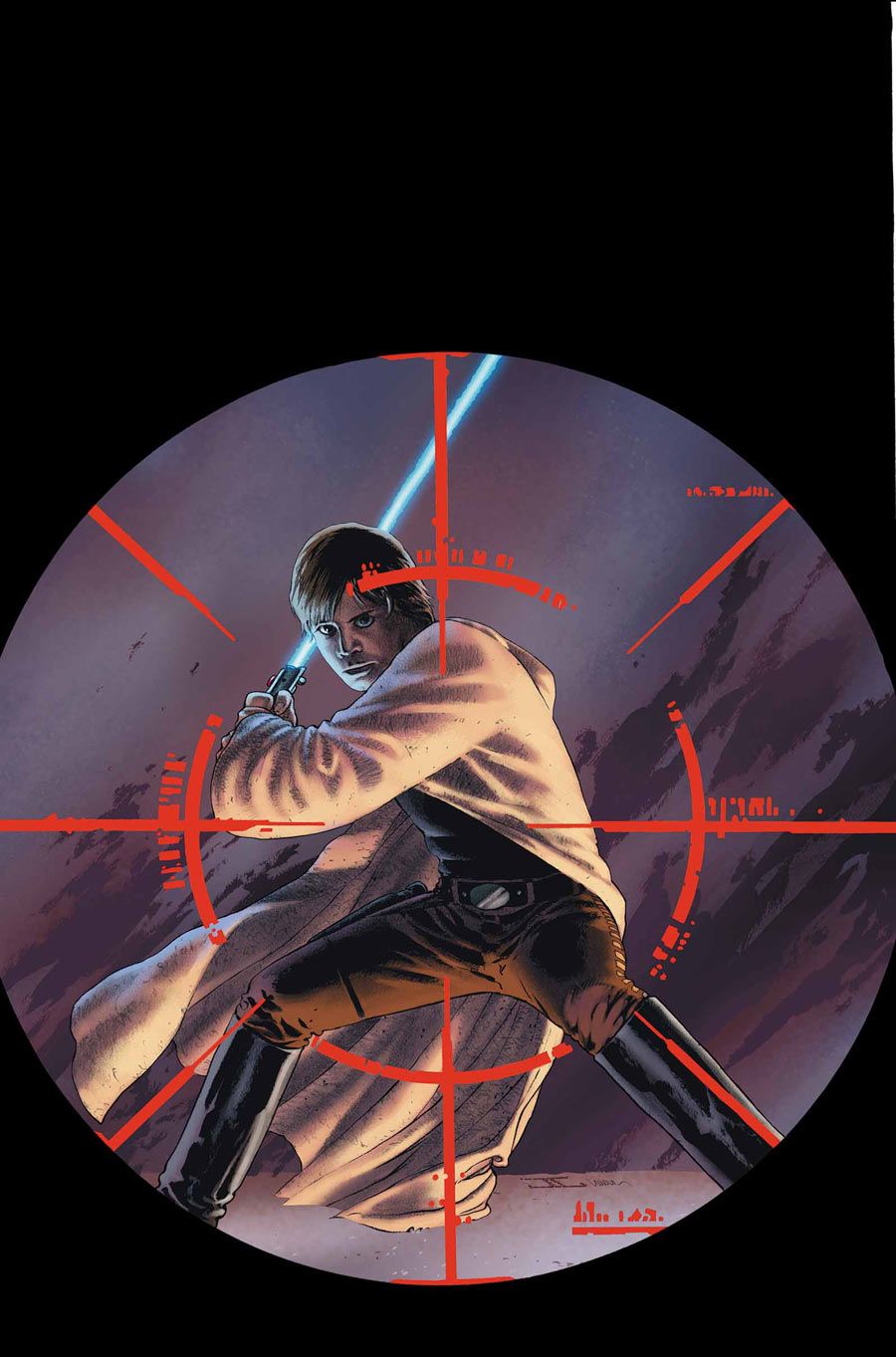Jason Aaron and John Cassaday's "Star Wars" #6 opens with a blind Luke Skywalker trying to beat Boba Fett. Colored by Laura Martin and lettered by Chris Eliopoulos, the opening scene reminds readers of Luke's rawness, but -- surprisingly -- Fett seems just as raw and chatty.
Cassaday's art tends to work like key frames in animation: some appearances of the characters look sharp, crisp and distinctly photo-referenced, which adds posed stiffness to them, but the details those key shots bring make the characters instantly recognizable and more vital through that recognition. In between those keys, the characters get a little more Impressionist. It's clear that Cassaday draws from the context of the story, but Luke doesn't always bear a striking resemblance to Mark Hamill. Laura Martin adds to that impressionistic take on the characters of this far, far away galaxy with a set of colors that is much more inline with the action figures than the films. That's not a bad thing on either count, as it adds a retro charm to "Star Wars" #6, making it look like a direct descendant from the 1970s and 1980s comic series Marvel also produced.
The fight between Skywalker and Fett is adequate, but the conclusion is unfulfilling, bordering on downright disappointing. Aaron spent a good amount of time in the previous issues giving readers reason to put stock in Boba Fett, but Fett's appearance in "Star Wars" #6 lacks skill and attitude. On top of that, if these two characters meet next in "Return of the Jedi," it seems as though that tussle should have been shaded differently given the direction this fight took.
Equally disappointing is the fact that the legend of the name "Skywalker" from the Clone Wars should trigger something in Fett's mind if he's so very good at what he does. After all, Anakin Skywalker was a hero and, in some regard, a media sensation in that era.
The subplot of "Star Wars" #6 puts Han Solo at the heart of a dramatic revelation. One of the first additions to the cast of the Marvel Comics version of the "Star Wars" universe debuts here. Now that Marvel Comics is forging new canon in between the episodes of the first trilogy (chronological release-wise), this revelation will have two possible outcomes: fans will be outraged or fans will be intrigued, particularly to learn more about this character and the relationship to the larger picture for "Star Wars" as a brand. This opens up additional stories to be told but, first, Aaron has some questions hanging in the air to address about this character.
"Star Wars" #6 is a fast-moving story, cleanly divided into advancing two story strands before bringing temporary closure to one of them. That closure gives Darth Vader new motivation in his quest and, along the way, this comic does a nice job of checking things into place and eliciting emotions. This series' energy is not unlike that of the original "Star Wars" series from decades ago but, now, so much more is "known" about these characters that any new revelations, like the ones in this issue, range from shocking to simply eyebrow-raising. How Aaron continues to build the outskirts of this galaxy from here is where the real intrigue lies.

